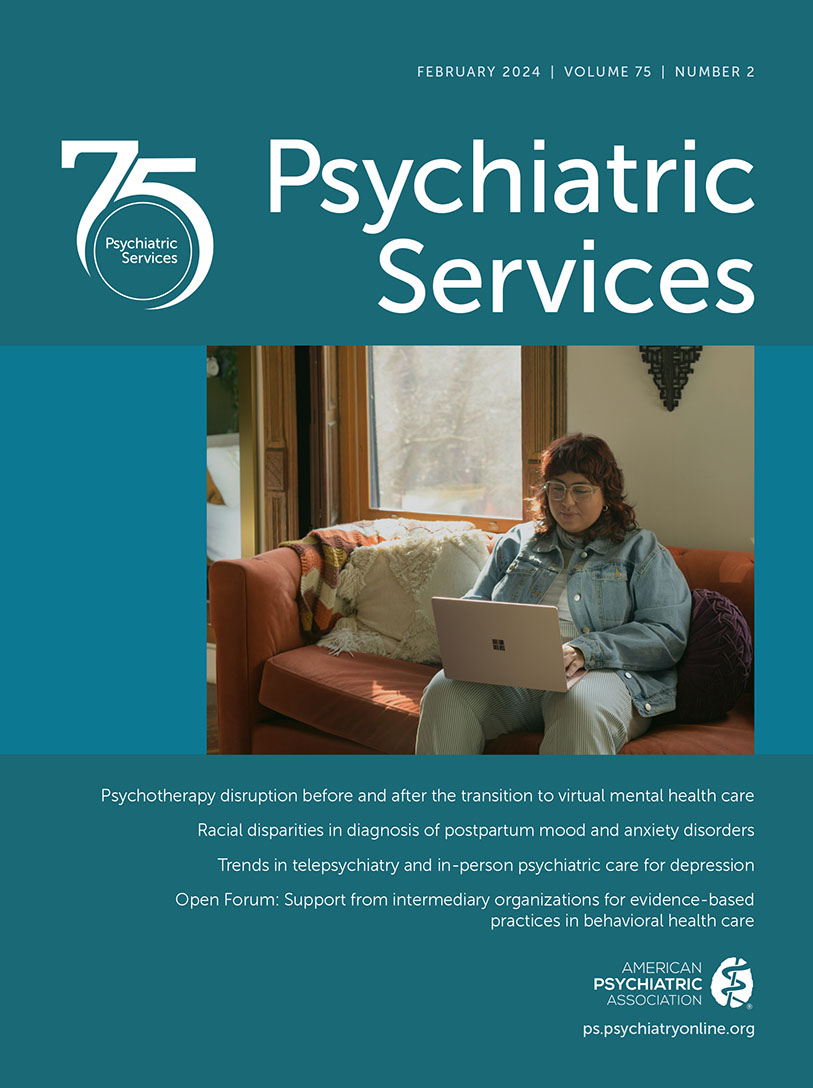Racial Disparities in Diagnosis of Postpartum Mood and Anxiety Disorders Among Symptomatic Medicaid Enrollees, 2012–2015
Abstract
Objective:
This study quantified the prevalence of postpartum mood and anxiety disorder (PMAD) diagnoses among symptomatic Michigan Medicaid enrollees and explored factors associated with receiving a diagnosis.
Methods:
Data sources comprised Michigan Medicaid administrative claims and Phase 7 Michigan Pregnancy Risk Assessment Monitoring System (MI-PRAMS) survey responses, linked at the individual level. Participants were continuously enrolled in Michigan Medicaid, delivered a live birth (2012–2015), responded to the survey, and screened positive for PMAD symptoms on the adapted two-item Patient Health Questionnaire. Unadjusted and adjusted weighted logistic regression analyses were used to predict the likelihood of having a PMAD diagnosis (for the overall sample and stratified by race).
Results:
The weighted analytic cohort represented 24,353 deliveries across the 4-year study. Only 19.8% of respondents with symptoms of PMAD had a PMAD diagnosis between delivery and 3 months afterward. Black respondents were less likely to have PMAD diagnoses (adjusted odds ratio [AOR]=0.23, 95% CI=0.11–0.49) compared with White respondents. Among White respondents, no covariates were significantly associated with having a diagnosis. However, among Black respondents, more comorbid conditions and more life stressors were statistically significantly associated with having a diagnosis (AOR=3.18, 95% CI=1.27–7.96 and AOR=3.12, 95% CI=1.10–8.88, respectively).
Conclusions:
Rate of PMAD diagnosis receipt differed by race and was low overall. Black respondents were less likely than White respondents to receive a diagnosis. Patient characteristics influencing diagnosis receipt also differed by race, indicating that strategies to improve detection of these disorders require a tailored approach.
Access content
To read the fulltext, please use one of the options below to sign in or purchase access.- Personal login
- Institutional Login
- Sign in via OpenAthens
- Register for access
-
Please login/register if you wish to pair your device and check access availability.
Not a subscriber?
PsychiatryOnline subscription options offer access to the DSM-5 library, books, journals, CME, and patient resources. This all-in-one virtual library provides psychiatrists and mental health professionals with key resources for diagnosis, treatment, research, and professional development.
Need more help? PsychiatryOnline Customer Service may be reached by emailing [email protected] or by calling 800-368-5777 (in the U.S.) or 703-907-7322 (outside the U.S.).



